It’s a situation that many can relate to, and even some might prefer: you’re in the middle of baking biscuits, deeply engrossed in the process, when you suddenly realize that you’re out of parchment paper.
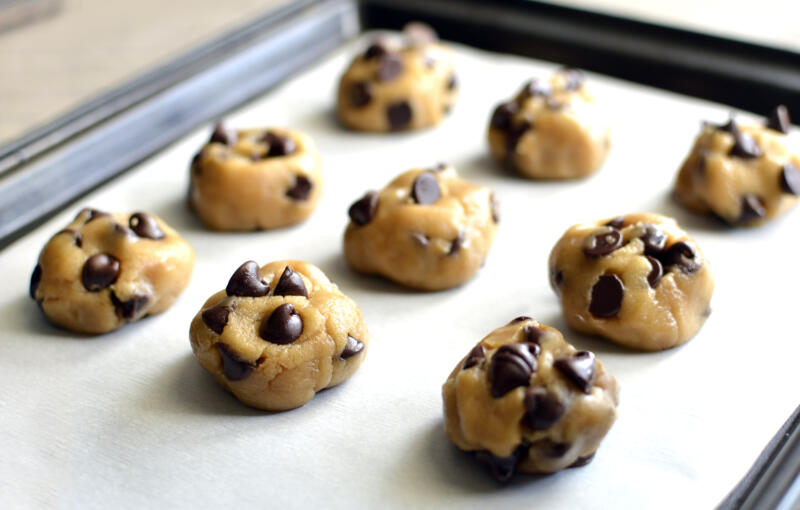
For some, this isn’t a problem at all, as they prefer to avoid using parchment paper for their own reasons.
However, for others, it’s a moment of quick thinking and improvisation, as the cooking process is already underway and can’t be halted.
The challenge then becomes finding an immediate alternative within your own kitchen.
In this article:
Why Do People Avoid Using Parchment Paper?
While it’s a handy tool for preventing sticking and making cleanup a breeze, there are several reasons why some bakers choose to avoid it.
Composed of cellulose and frequently treated with silicone or quilon, parchment paper is revered for its non-stick properties.
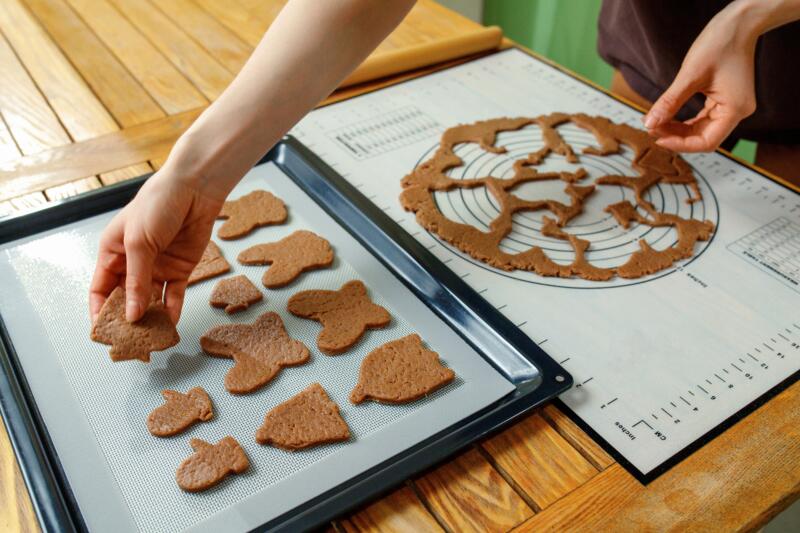
However, this baking staple isn’t without its downsides.
Firstly, the cost can be a deterrent. High-quality parchment paper isn’t cheap, and when you’re baking regularly, the expense can add up.
Secondly, availability can be an issue. Not all grocery stores carry parchment paper, and in some areas, it can be downright hard to find.
Moreover, there are environmental concerns to consider. Parchment paper is single-use and non-recyclable, which doesn’t sit well with those trying to reduce their carbon footprint.
Bakers also face practical challenges when using parchment paper.
It can be tricky to cut the paper to the right size for your baking tray, and there’s always the risk of it sticking to your baked goods or burning in the oven.
Baking Alternatives to Parchment Paper
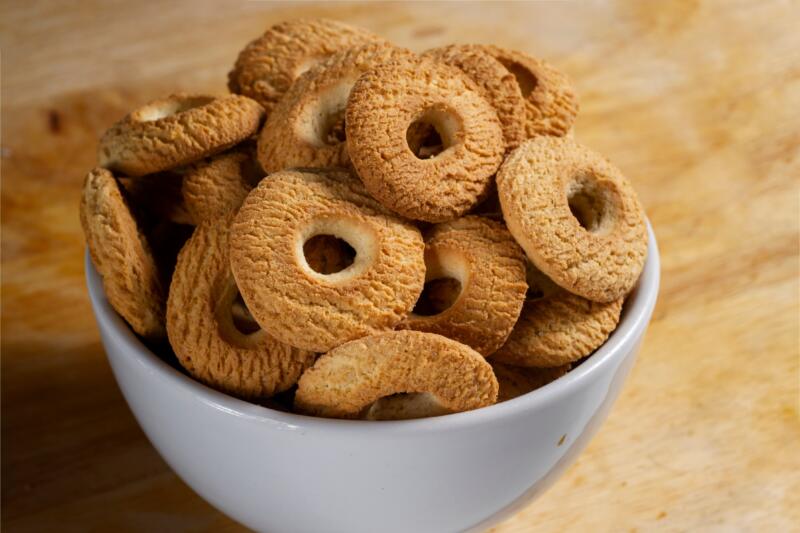
If you’re one of the many bakers looking to ditch parchment paper, you’re in luck.
There are several alternatives that not only serve the same purpose but also come with their own unique benefits.
1. Silicone Baking Mats
![]()
One of the most popular substitutes for parchment paper is silicone baking mats. These mats are designed to be non-stick, making them perfect for baking cookies and other sticky treats.
One of the biggest advantages of silicone baking mats is that they’re reusable. You can wash them after each use, which makes them a greener alternative to parchment paper.
They’re also incredibly easy to clean, saving you time on washing up.
Silicone baking mats are also known for their durability. They handle high temperatures without damage or melting.
They also offer a range of sizes and shapes to match any baking tray.
When picking a silicone baking mat, quality should be a top consideration. A high-grade mat will be able to resist high temperatures without deteriorating or releasing harmful compounds.
This factor is not only pivotal for the success of your culinary endeavors but also for the safety and health of those who will savor your creations.
2. Non-Stick Cooking Sprays
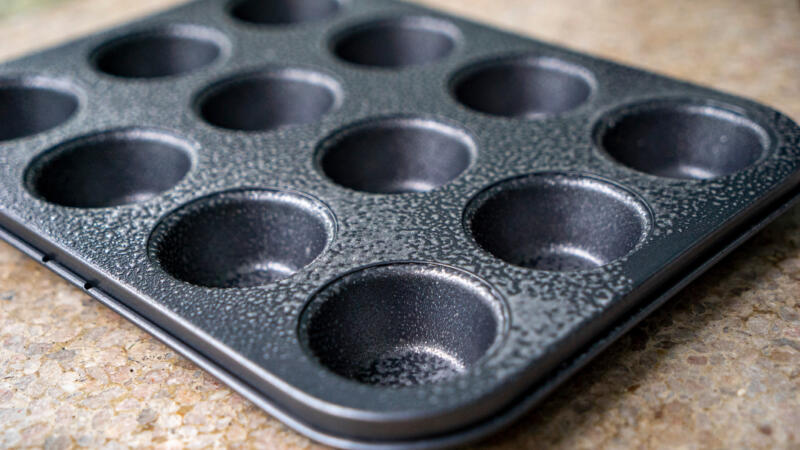
Another alternative to parchment paper is non-stick cooking spray.
Brands like Pam, Crisco, or Fry Light offer sprays that can be used on aluminum or stainless steel baking sheets to prevent cookies from sticking.
The key to using non-stick cooking spray effectively is to apply an even layer of spray on your baking sheet.
It’s also important to respray your sheet between each batch of cookies to ensure that they don’t stick.
3. Aluminum Foil
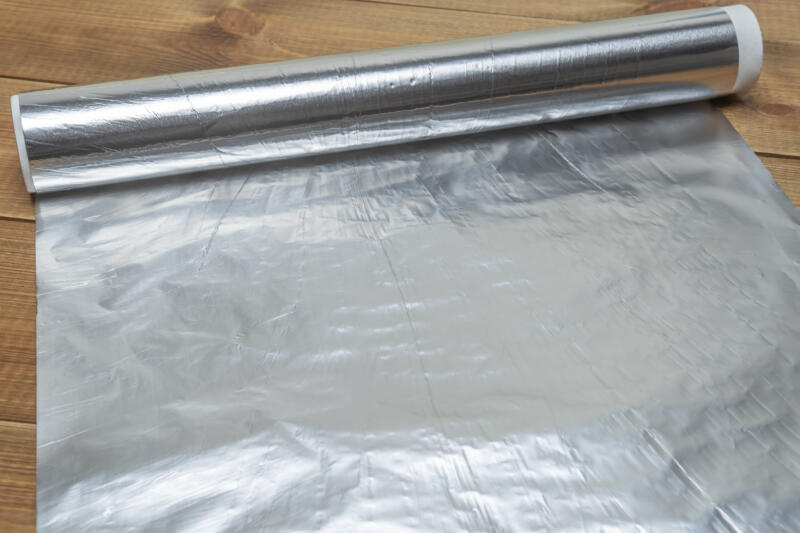
Aluminum foil is a readily available option that you likely already have in your kitchen.
It’s heat-resistant and can be used to line baking sheets, but it doesn’t have the same non-stick properties as parchment paper.
4. Silicone Molds
![]()
Silicone pans are another excellent alternative to parchment paper. These pans are crafted from a flexible material that resists heat, ensuring they remain intact even at high oven temperatures.
A primary advantage of silicone pans is their sustainability.
Being reusable, they eliminate the need for single-use items like parchment paper. This not only reduces waste but also saves you money in the long run.
While silicone is a non-stick material, it’s still recommended to lightly grease your silicone pan before baking.
This ensures your baked treats slide out effortlessly, without any snagging or breakage.
5. Greased Baking Pans
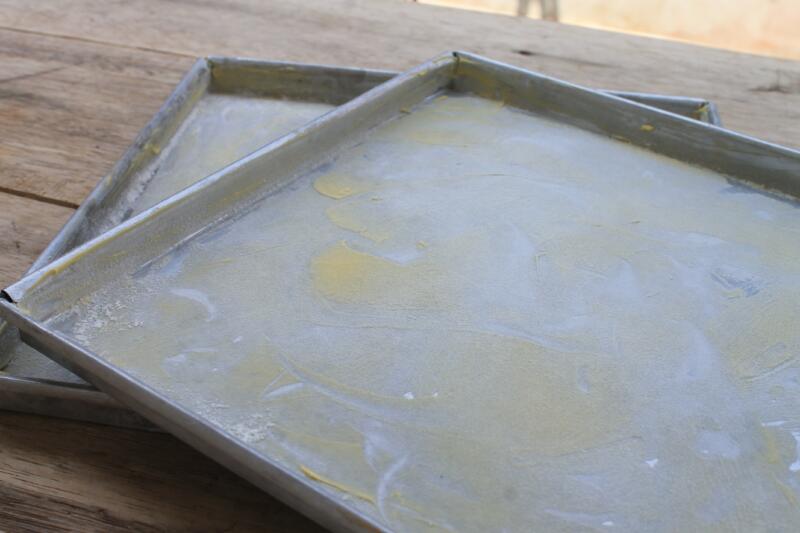
While this method requires a bit more cleanup, it’s a tried-and-true method that doesn’t require any special materials.
Greasing baking pans, while often essential for non-stick results, has its drawbacks.
Excess grease can lead to uneven browning, potentially altering the texture and flavor of baked goods.
Overgreasing might not only add unwanted calories but can also result in a fried texture on the base of items like cakes.
Lastly, the continuous use of butter or oil for greasing can be an added expense for frequent bakers.
Each of these materials has its own set of pros and cons, so it’s worth experimenting to see which one works best for you.
Whether you prioritize availability, non-stick properties, or heat resistance, there’s an alternative to parchment paper that’s perfect for your baking needs.
Preparation and Baking Tips
Baking without parchment paper doesn’t have to be a daunting task.
With the right preparation and techniques, you can bake delicious cookies that slide right off the pan.
Preparing the Cookie Dough Without Parchment Paper
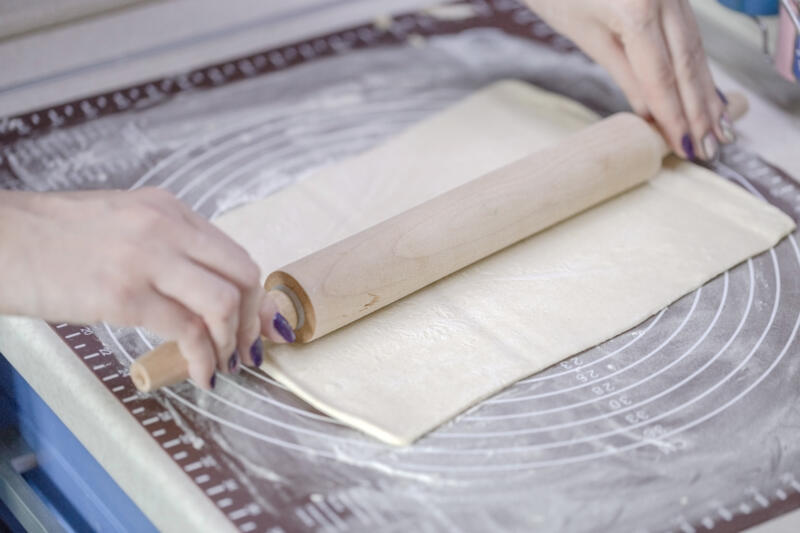
When preparing the cookie dough without parchment paper, there are a few things to keep in mind to prevent the dough from sticking. One of the most important is proper flouring.
Before you start, dust your work surface with a generous amount of flour. This forms a protective layer between the dough and the surface, ensuring it doesn’t adhere.
You can also dust your hands and the rolling pin with flour for extra protection.
Greasing the Cookie Sheet or Pan
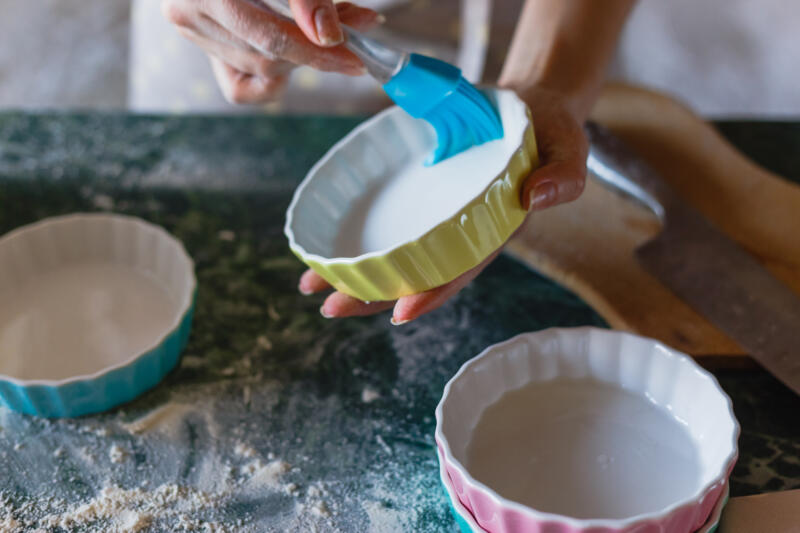
Greasing the cookie sheet or pan is an essential step when baking without parchment paper.
This creates a non-stick surface that allows your cookies to slide right off the pan once they’re baked.
There are several methods for greasing your pan. You can use cooking spray, butter, or vegetable shortening.
No matter which product you choose, it’s important to grease the entire surface of the pan, not just the areas where you’ll be placing the cookies.
To grease your pan with cooking spray, simply spray a light, even layer over the entire surface.
If you’re using butter or shortening, use a piece of paper towel or a pastry brush to spread it evenly over the pan.
Choosing the Right Recipe for No-Parchment Cookies
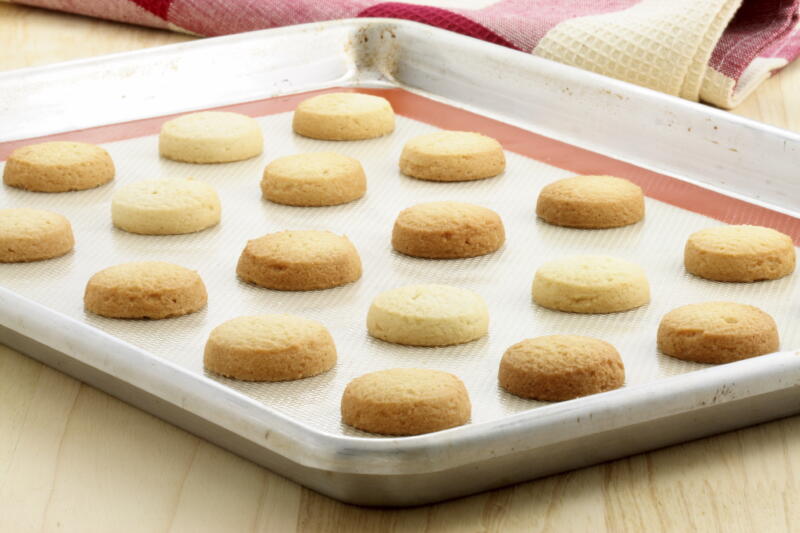
Finally, choosing the right recipe is crucial when baking cookies without parchment paper.
Some cookie recipes are more forgiving than others when it comes to sticking, so it’s important to choose a recipe that’s suitable for a non-stick surface.
Certain recipes may require specific greasing methods, so be sure to read the recipe thoroughly before you start baking.
If a recipe calls for a parchment-lined baking sheet, it might not be the best choice for baking without parchment paper.
Time and Temperature Settings for No-Parchment Cookies
When baking cookies without parchment paper, it’s crucial to get the time and temperature settings just right.
The optimal temperature for most cookies is around 350°F (175°C). This helps your cookies attain a consistent bake and that desired golden shade.
The baking time can vary based on several factors. The size and thickness of your cookies, as well as the desired texture, can all affect how long they need to be in the oven.
As a general rule, most cookies take between 10 to 15 minutes to bake.
However, if your cookies are not baking as expected, you may need to adjust the time and temperature settings.
If they’re browning too quickly, try reducing the oven temperature. If they’re not browning enough, you may need to increase the temperature or extend the baking time.
Other Considerations Before Baking
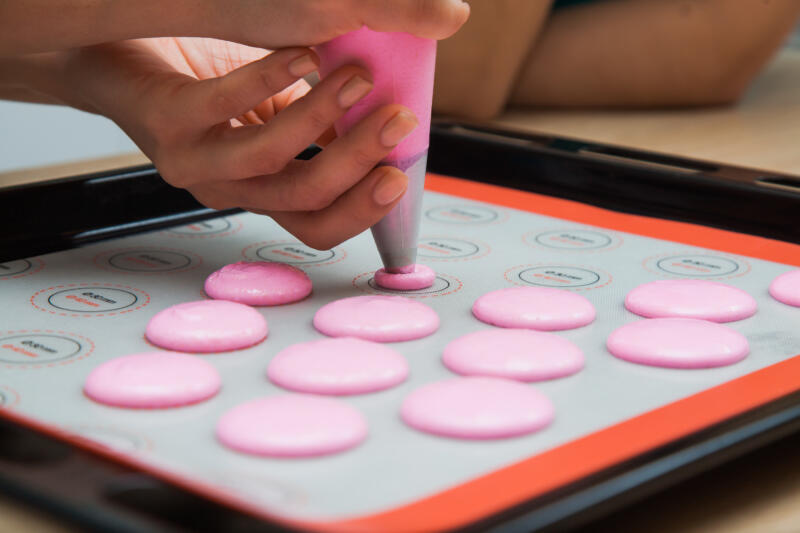
There are several other considerations to keep in mind before you start baking cookies without parchment paper.
Type of Cookie Sheet or Pan
The type of cookie sheet or pan you use can affect the outcome of your cookies.
Darker pans absorb more heat and can cause your cookies to brown more quickly.
In contrast, lighter pans bounce back heat, producing cookies that are softer and less browned.
Baking Temperature
The baking temperature is another important factor.
Different ovens can vary in temperature, so it’s a good idea to use an oven thermometer to ensure your oven is at the correct temperature.
The way you prepare your baking surface can also have a big impact.
Greasing the Surface
Greasing the baking surface can prevent sticking, but it can also affect the texture of your cookies.
Test a Small Batch
Finally, it’s always a good idea to test a small batch of cookies before baking the entire batch.
This allows you to make any necessary adjustments to the recipe or baking time without wasting a large amount of dough.
By considering those factors, you can ensure that your cookies come out perfect, even without the use of parchment paper.
Closing Thoughts
Baking without parchment paper might seem intimidating at first, but with a little practice and patience, you’ll find it’s a skill well worth mastering.
So why not give it a try? Remember, every great baker started somewhere.
And as always, if you have any questions or comments, or if you’d like to share your own experiences of baking without parchment paper, we’d love to hear from you.